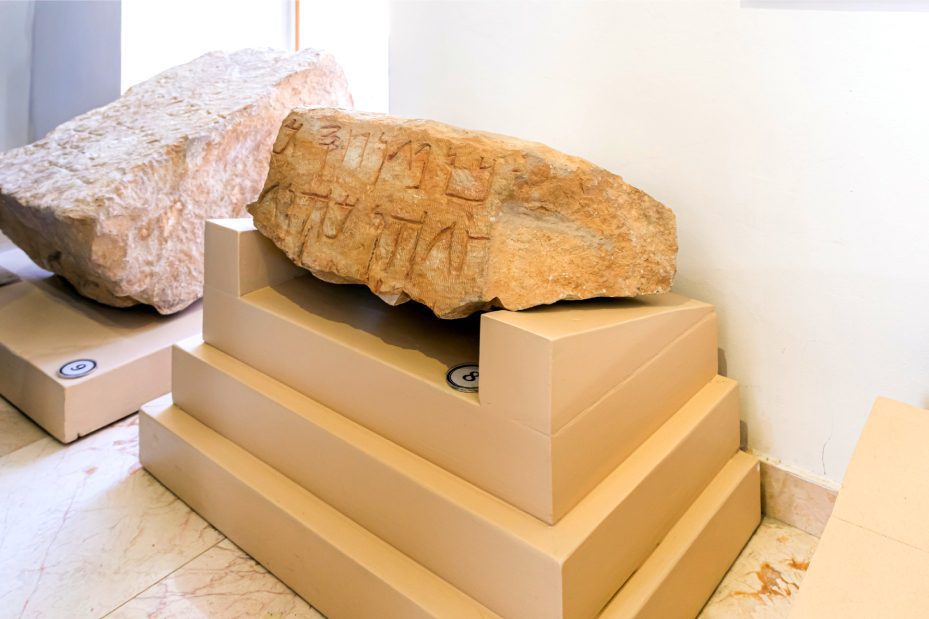In the Samaritans and the Jews Tour, we will explore this interesting subject and examine the relations between the two. Now, what do we know about the Samaritans? So the Samaritans, in the sense of Torah observers, are a unique ethnic-religious people and group that claims to be a direct continuation of the children of Israel. Most Samaritans now live on Mount Gerizim near Nablus and the city of Holon, just next to Tel Aviv.
The Samaritan population numbered over a million in the days of their revered leader, Baba Rabba, in the 4th century. But by the beginning of the 20th century; only about 130 people survived, making them one of the smallest communities in the world. Since then; the community has recovered a little and it has about 780 people.
Samaritans and the Jews Tour: The Origins of the Samaritans
But the origins of the Samaritans as a religious group are controversial in the historical research. Furthermore, the Samaritan tradition in this context is significantly different from the Jewish one. According to Samaritan tradition, they are “pure Israelites”; part of the people of Israel and bearers of their true heritage. Furthermore, they attribute the separation between them and the Jews to disagreements over the “chosen place” for the construction of the Temple.
According to them, Moshe Rabbeinu established the sanctity of Mount Gerizim, and therefore, according to the tradition in their possession, Joshua built the Temple on Mount Gerizim at the site on the mountain they call “Givot Olam”. Phinehas son of Eleazar son of Aaron the priest and his sons served as high priests on the mountain. The Mishkan, on Mount Gerizim, was recognized by all the tribes of Israel. They point to the lineage of the sons of Aaron the priest.
Samaritans and the Jews Tour: The Split According to the Samaritans
The Samaritans tell of a conflict that broke out between Eli the High Priest who was a descendant of Itamar the High Priest. As a result, Eli The High Priest retired and established the Temple in Shilo. Most of the nation followed Eli the High Priest.
According to the Samaritans, the separation of the people of Israel was created by the tribes who retired and did not accept the opinion that Mount Gerizim is the “place chosen by God.” The Samaritans today claim to be the descendants of the Israeli tribes Ephraim and Menashe; who did not exile with the other ten tribes of the Kingdom of Israel in the Assyrian exile that occurred in 722 BCE.
Samaritans and the Jews Tour: The Origins of the Samaritans According to the Jews
The Book of Kings tells another version about the origins of the Samaritan community. It says the Assyrian Empire, like other empires of its time, used exile as a way of pacification. In other words, they exiled the captured population from one place of residence to another; presumably to prevent regional revolts. The kingdom of Israel in Samaria Sennacherib was exiled to Assyria; while to Samaria Asherhdon (Sennacherib’s son and heir) brought other peoples – the Cults (also mentioned in Sages’ literature) and other peoples.
Samaritans and the Jews Tour: Another Rift in the Persian Period
The Samaritans and Jews came into conflict during the reign of the Persian Empire in Israel. Cyrus king of Persia who ruled according to the principle of religious tolerance allowed the Jews of Babylon (who were exiled by the king of Babylon in 586 BCE after the destruction of the First Temple) to return to the Land of Israel and build the Second Temple.
The confirmation that the exiles received from the king of Persia is called the declaration of Cyrus. The exiles who returned from Babylon in 516 BCE found the Samaritans there. The latter believed that they were Jews and wanted to join the construction of the Temple. But the exiles refused. The returnees rejected them on the grounds that only they were given permission to build the Temple. The reasons for their rejection are related to the fact that they did not see them as real Jews but as idolaters.
The Samaritans piled difficulties on the construction of the Temple. They tried to prevent the construction of the Temple by threatening and harming the morale of the returnees. In addition, they informed the Persian authorities that the Jews intended to rebel against the Persian rule. Here the ways of the Jews and the Samaritans; who built themselves a temple on Mount Gerizim, were finally parted.



